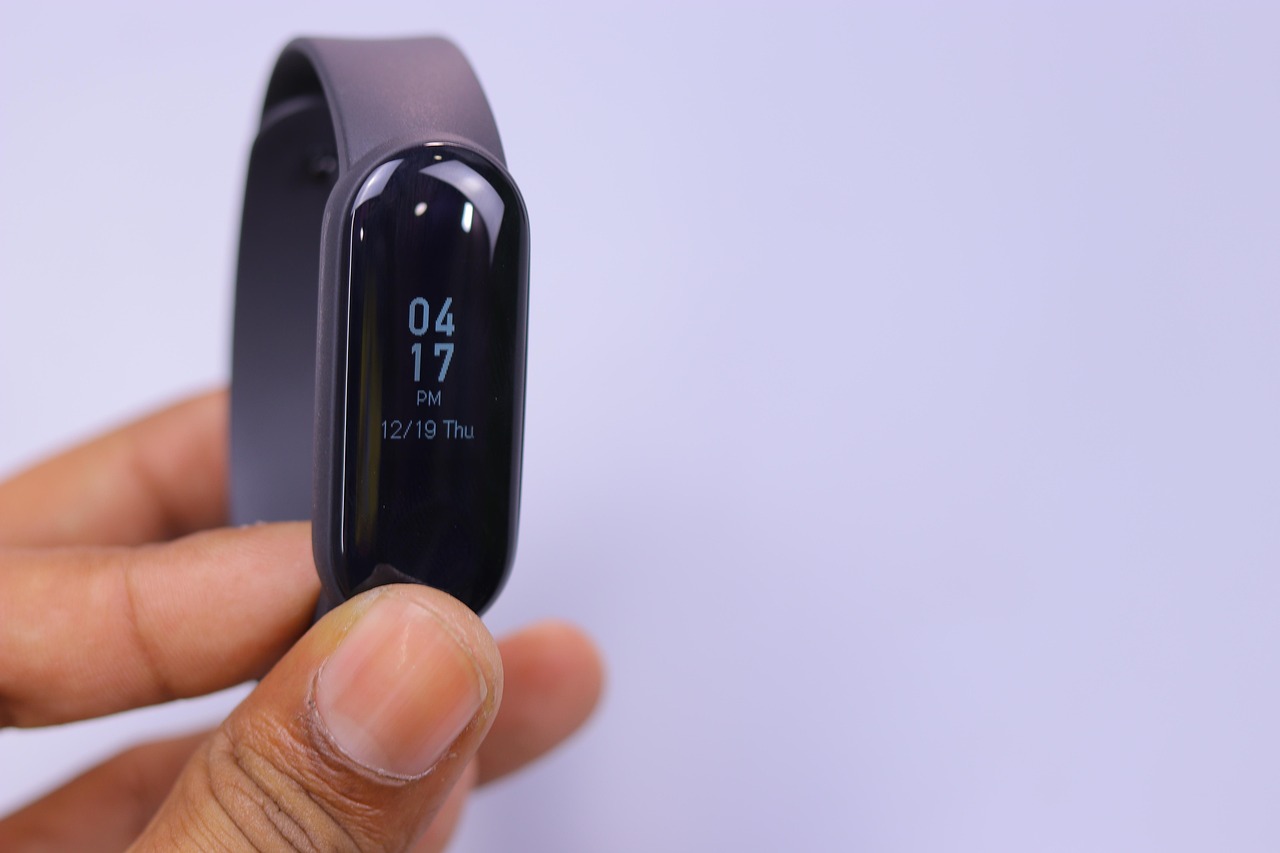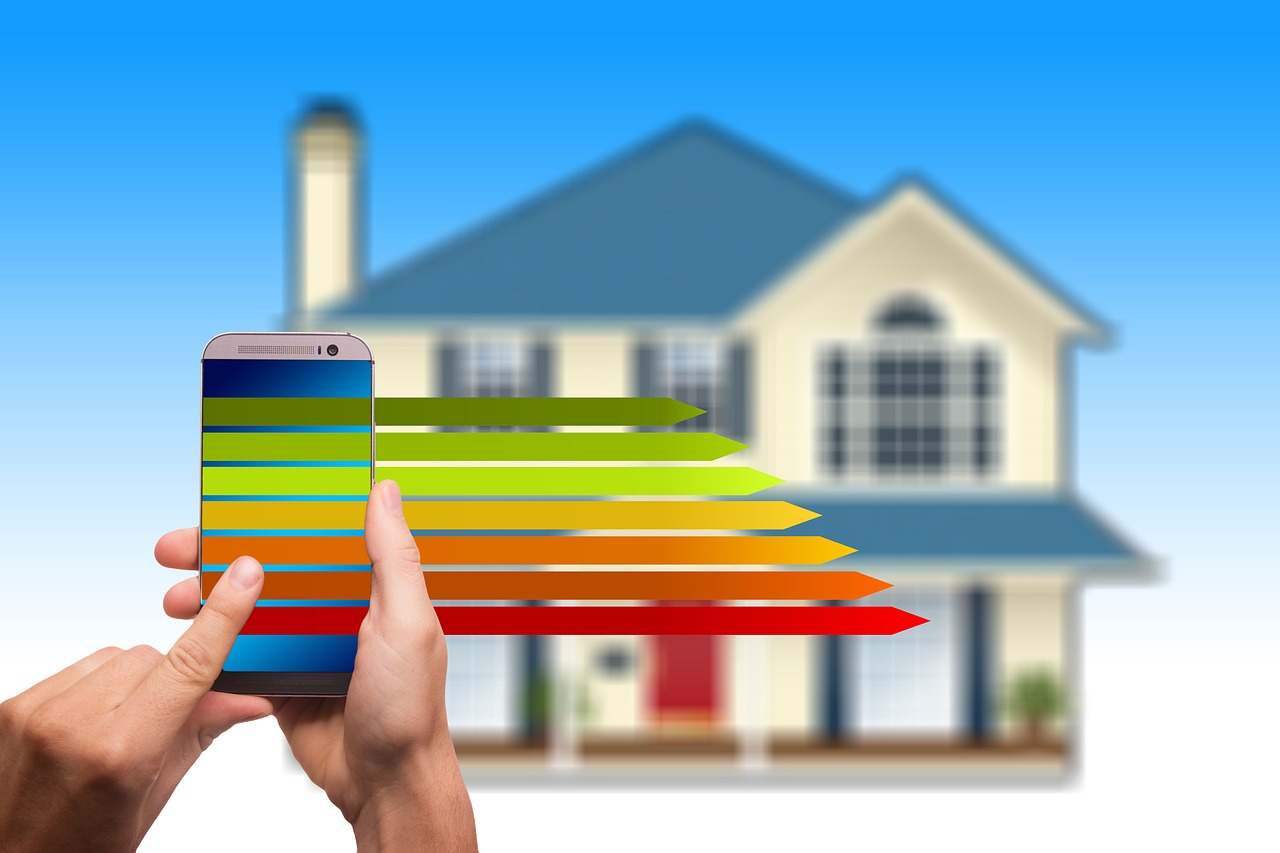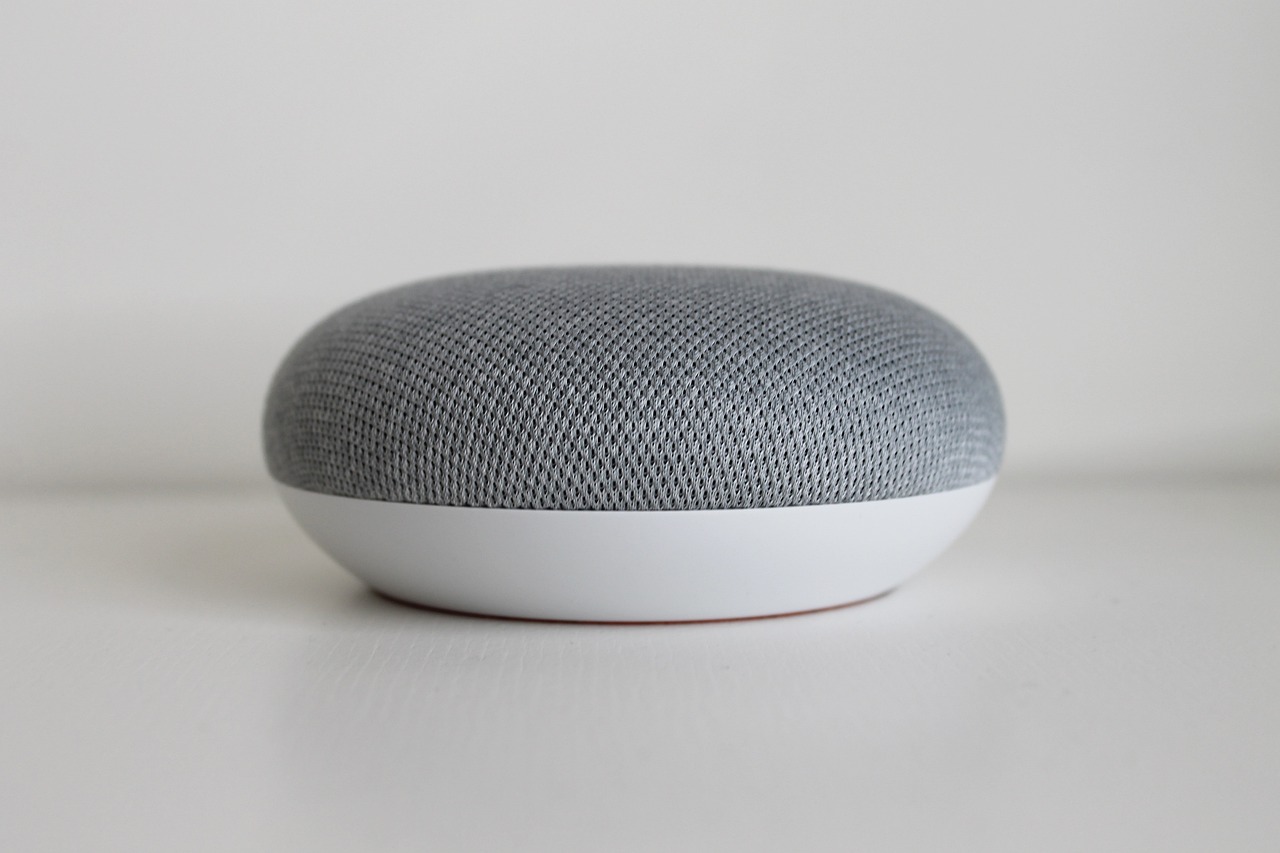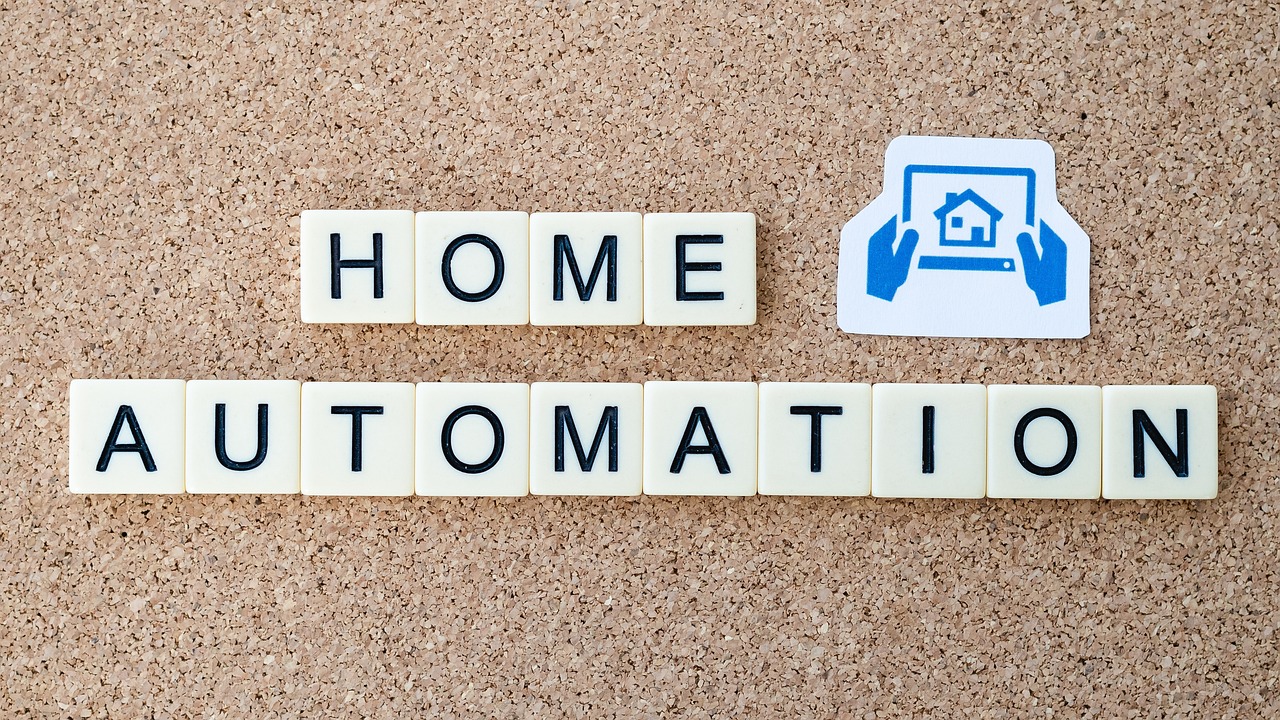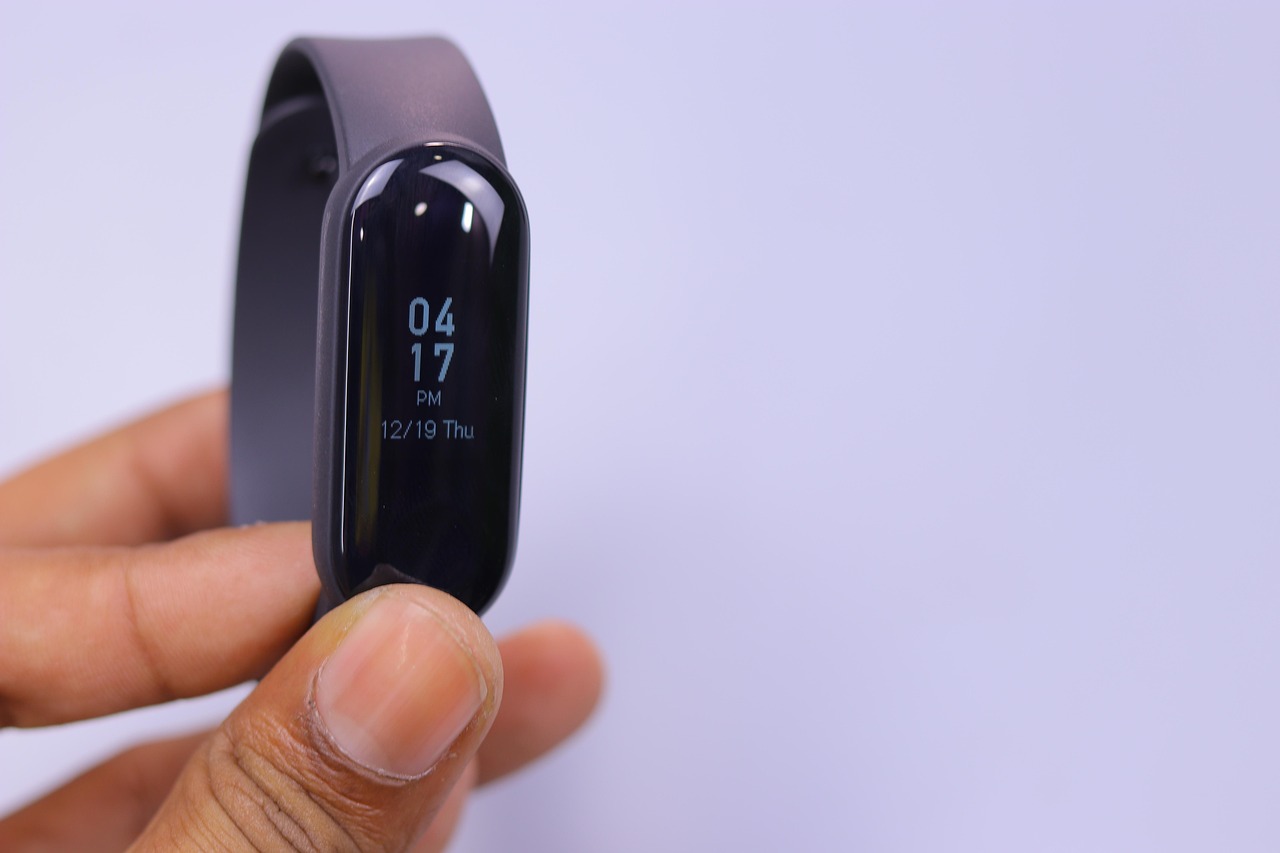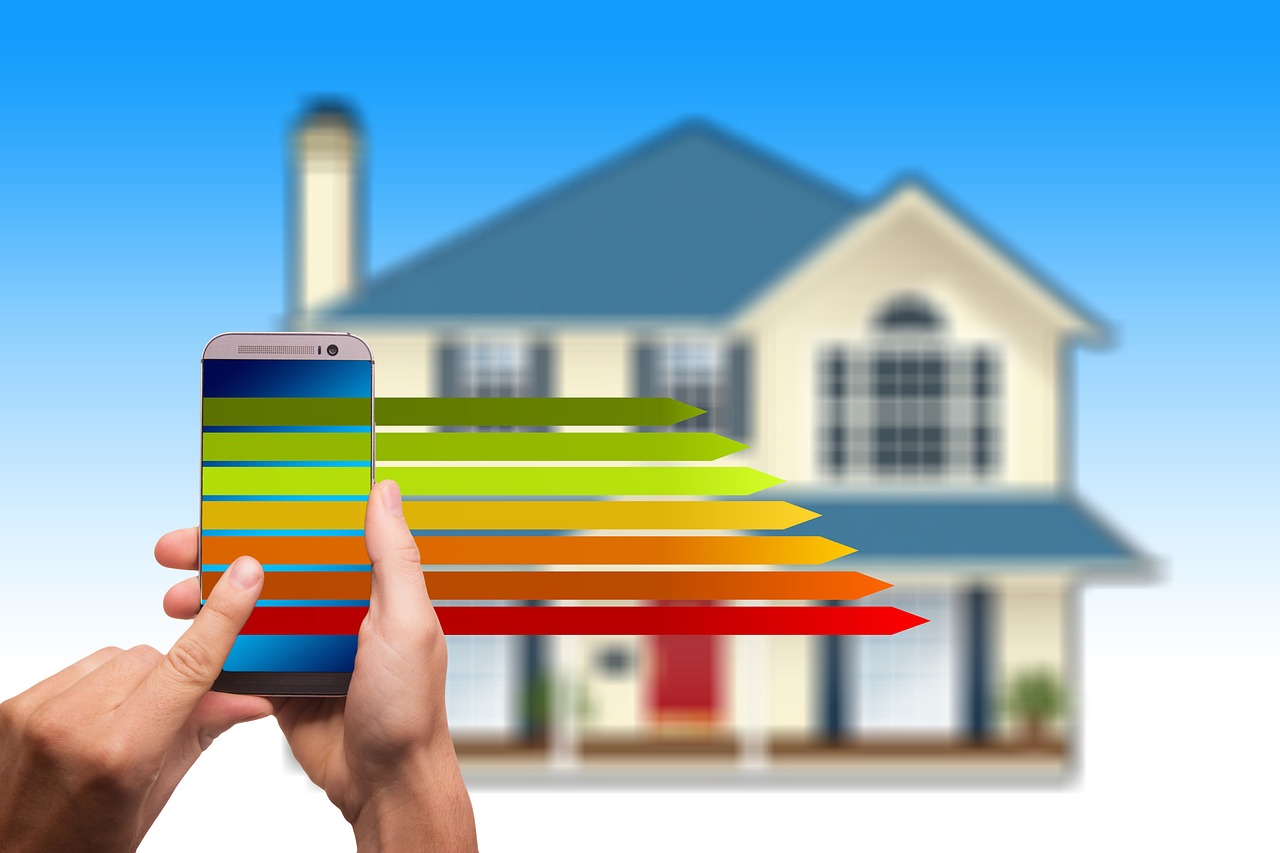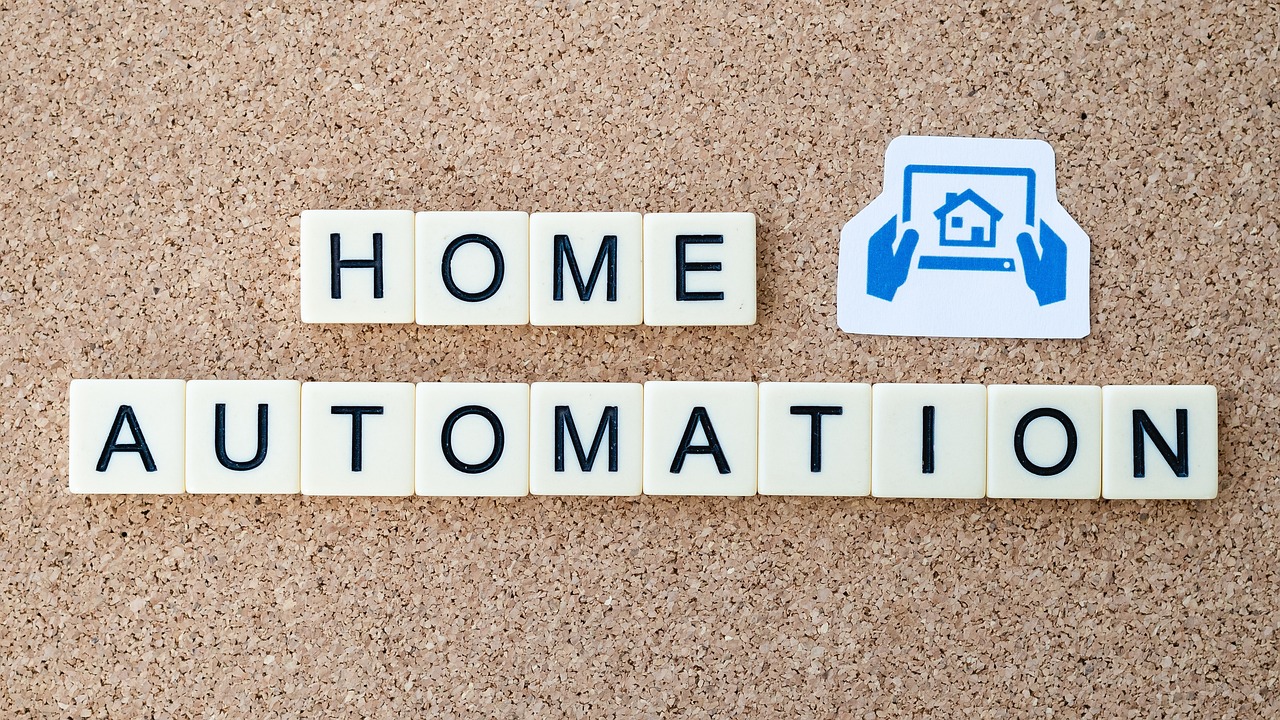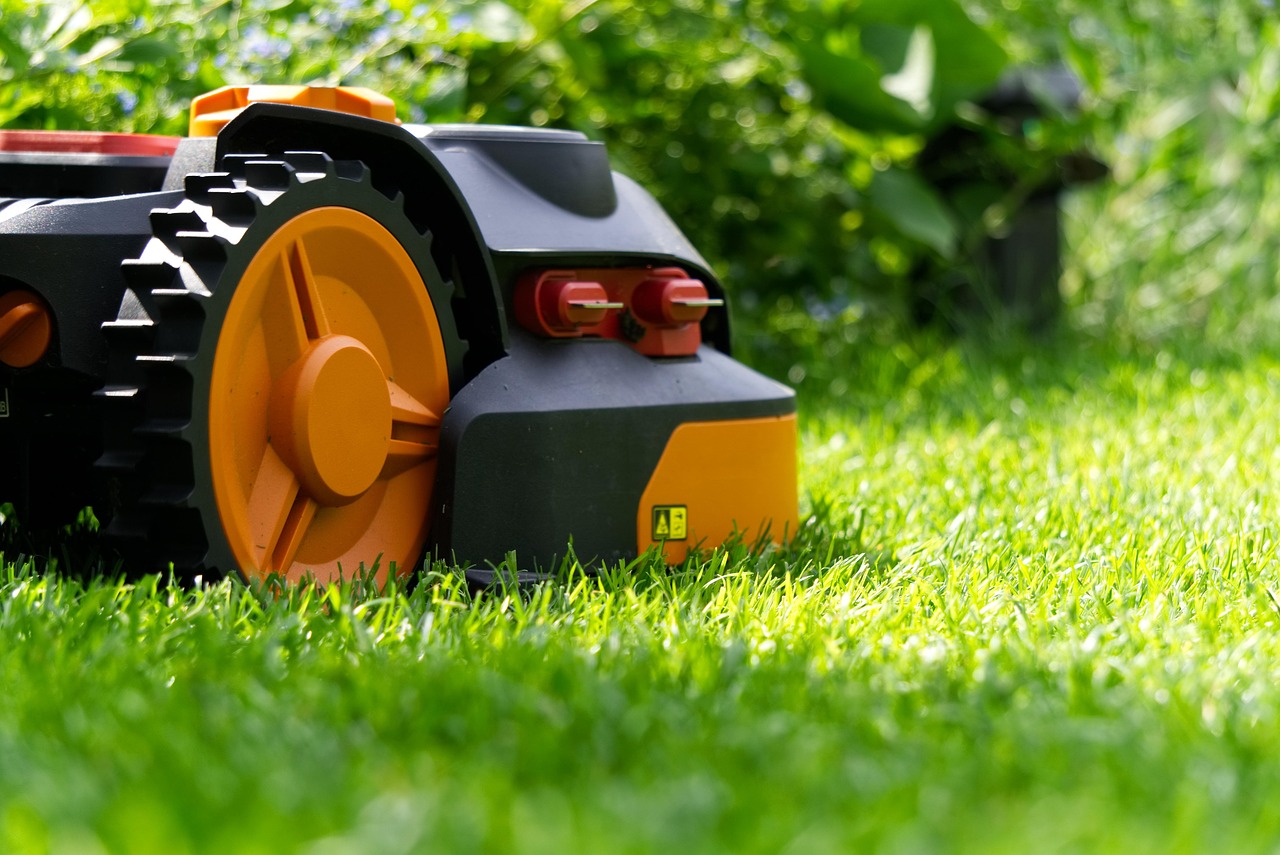Explore the most effective smart home devices designed to enhance indoor air quality, ensuring a healthier living environment for you and your family.
Understanding Indoor Air Quality
Indoor air quality (IAQ) is a critical aspect of health and comfort within our homes. Poor IAQ can lead to various health issues, including respiratory problems, allergies, and fatigue. Understanding the factors that contribute to IAQ is essential for maintaining a safe and pleasant living space.
Importance of Air Quality in Your Home
Maintaining good air quality is crucial for everyone, especially for sensitive individuals such as children and the elderly. Good air quality helps in:
- Reducing allergens and pollutants
- Improving overall respiratory health
- Creating a comfortable atmosphere
Top Smart Air Purifiers
Smart air purifiers are equipped with advanced filtration systems that effectively remove pollutants, allergens, and odors. These devices ensure cleaner air in your home.
Features to Look for in Air Purifiers
- Filter Type: HEPA filters are essential for trapping tiny particles.
- CADR Ratings: Check the Clean Air Delivery Rate for effectiveness.
- Noise Levels: Consider quieter models for bedrooms.
- Smart Connectivity: Look for Wi-Fi enabled devices for remote control.
Smart Humidifiers and Dehumidifiers
Maintaining optimal humidity levels is vital for comfort and health. Smart humidifiers and dehumidifiers can automatically adjust moisture levels based on the environment.
Benefits of Smart Humidifiers
Smart humidifiers help alleviate dry skin, respiratory issues, and static electricity by maintaining balanced humidity levels in your home.
Air Quality Monitors
Air quality monitors provide real-time data on indoor pollutants, allowing homeowners to take proactive measures to improve their living environment.
Conclusion: Enhancing Your Home’s Air Quality
Investing in smart home devices for air quality improvement not only enhances comfort but also promotes a healthier living environment for you and your loved ones.

Understanding Indoor Air Quality
Indoor air quality (IAQ) is a crucial factor that directly affects the health and comfort of individuals within residential and commercial spaces. It encompasses a variety of elements including the presence of pollutants, humidity levels, and temperature. Poor IAQ can lead to a range of health issues, particularly for vulnerable populations such as children, the elderly, and those with pre-existing health conditions.
Several factors contribute to the quality of indoor air. Common indoor pollutants include volatile organic compounds (VOCs), which can emanate from household products, building materials, and even furniture. Additionally, dust, mold, and pet dander are significant contributors to poor air quality. These pollutants can trigger allergies, asthma, and other respiratory problems.
Maintaining good indoor air quality is essential for several reasons:
- Health Benefits: Clean air reduces the risk of respiratory diseases and allergies.
- Enhanced Comfort: Proper humidity levels can alleviate discomfort caused by dry air or excessive moisture.
- Increased Productivity: A healthy indoor environment can lead to improved concentration and productivity, particularly in workspaces.
To monitor and improve indoor air quality, various smart devices can be employed. These include air purifiers, humidifiers, and air quality monitors that provide real-time data on air conditions. By investing in these technologies, homeowners can significantly enhance their living environment.
In conclusion, understanding and improving indoor air quality is vital for promoting a healthier lifestyle. By being aware of the factors that influence IAQ and utilizing smart devices, individuals can create a more comfortable and safe atmosphere in their homes.

Importance of Air Quality in Your Home
Maintaining good air quality is essential for a variety of reasons, particularly for the well-being of your family and loved ones. The air we breathe indoors can be significantly more polluted than outdoor air, making it vital to ensure that your living space is free from harmful pollutants and allergens. This is especially important for individuals who may be more sensitive to air quality issues, such as children, the elderly, or those with pre-existing health conditions.
One of the primary benefits of good air quality is its direct impact on respiratory health. Poor air quality can lead to a range of respiratory problems, including asthma, allergies, and other chronic conditions. By investing in air purification systems and maintaining a clean environment, you can drastically reduce the presence of airborne irritants.
Furthermore, maintaining optimal air quality helps in reducing allergens that can trigger reactions in sensitive individuals. Common allergens like dust mites, mold spores, and pet dander can thrive in environments with poor ventilation and humidity control. Implementing smart home devices such as air purifiers and humidifiers can significantly mitigate these issues.
| Benefits of Good Air Quality | Impact on Health |
|---|---|
| Reduces allergens | Decreases asthma and allergy symptoms |
| Improves respiratory health | Enhances lung function |
| Promotes a comfortable living space | Increases overall well-being |
In addition to health benefits, good air quality contributes to a more comfortable living space. It can enhance your overall mood and productivity, making your home a more enjoyable place to be. With the right tools and devices, maintaining good air quality is achievable and can lead to significant long-term benefits.
In conclusion, prioritizing air quality in your home is not just a matter of comfort, but a crucial aspect of health and well-being. By taking proactive measures to improve indoor air quality, you can create a safer, healthier environment for you and your family.

Top Smart Air Purifiers
In today’s world, ensuring clean air in our homes has become more critical than ever. Smart air purifiers are at the forefront of this movement, equipped with advanced filtration systems that can effectively eliminate a variety of pollutants, allergens, and unpleasant odors. By integrating smart technology, these devices not only enhance air quality but also provide users with the convenience of remote monitoring and control.
These purifiers utilize multi-layered filtration systems, often featuring HEPA filters, activated carbon layers, and UV light technology. This combination allows them to trap tiny particles, such as dust, pollen, pet dander, and even harmful bacteria, ensuring that the air you breathe is as pure as possible.
- Pollutant Removal: Smart air purifiers can target specific pollutants, including volatile organic compounds (VOCs) and smoke, making them essential for households with smokers or those using chemical-based cleaning products.
- Allergen Reduction: For allergy sufferers, these devices can significantly reduce symptoms by capturing allergens that trigger respiratory issues.
- Odor Elimination: The activated carbon filters effectively absorb and neutralize unwanted odors, creating a fresher indoor environment.
When selecting a smart air purifier, consider features such as CADR (Clean Air Delivery Rate) ratings, which indicate the efficiency of the unit in filtering air in relation to the size of the room. Additionally, look for models with smart connectivity options that allow you to control settings via smartphone apps, providing real-time updates on air quality and filter status.
In conclusion, investing in a smart air purifier is a proactive step towards improving your home’s air quality. By choosing a model that fits your specific needs and preferences, you can ensure a healthier living environment for you and your family.
Features to Look for in Air Purifiers
When selecting an air purifier, several key features should be evaluated to ensure optimal performance and suitability for your home. Understanding these aspects will help you make an informed decision that aligns with your specific air quality needs.
- Filter Type: The type of filter used in an air purifier is crucial. HEPA filters are the gold standard, capturing 99.97% of particles as small as 0.3 microns. Other filter types, such as activated carbon filters, are effective for odors and gases.
- CADR Ratings: The Clean Air Delivery Rate (CADR) measures the volume of filtered air delivered by the purifier. Higher CADR ratings indicate better performance in removing specific pollutants, such as dust, pollen, and smoke.
- Noise Levels: Consider the noise output of the air purifier, especially if you plan to use it in a bedroom or quiet space. Look for models that operate quietly, ideally under 30 decibels on the lowest setting.
- Smart Connectivity Options: Many modern air purifiers come equipped with smart features that allow you to control them via smartphone apps. This convenience enables you to monitor air quality in real-time and adjust settings remotely.
- Maintenance and Filter Replacement: Evaluate how often filters need to be replaced and the cost associated with maintenance. Some models offer filter change indicators to simplify this process.
- Portability: If you plan to move the air purifier between rooms, consider its size and weight. A lightweight design with a carrying handle can enhance portability.
In conclusion, by examining these essential features, you can select an air purifier that effectively meets your home’s air quality requirements, ensuring a healthier living environment for you and your family.
HEPA Filters Explained
HEPA (High-Efficiency Particulate Air) filters are renowned for their exceptional ability to capture tiny particles from the air, playing a crucial role in enhancing indoor air quality. These filters are designed to trap at least 99.97% of particles that are 0.3 microns in diameter, which includes common allergens such as dust mites, pollen, pet dander, and even some bacteria and viruses.
The effectiveness of HEPA filters stems from their unique construction. They are made of a dense mat of fibers that create a complex maze for airborne particles. When air passes through the filter, particles collide with the fibers and become trapped, preventing them from being recirculated back into the environment. This makes HEPA filters an essential component for anyone looking to reduce allergens in their home.
In addition to their allergen-trapping capabilities, HEPA filters also contribute to overall air quality improvement. By reducing the concentration of harmful particles in the air, they can help alleviate respiratory issues and promote better health outcomes, particularly for individuals with asthma or other respiratory conditions.
Furthermore, many modern air purifiers are equipped with HEPA filters, making them a popular choice for those seeking to enhance their indoor environment. When choosing an air purifier, it is important to look for units that specify the use of true HEPA filters, as some products may use lower-quality filters that do not meet the same standards.
In conclusion, investing in a HEPA filter is a proactive step towards creating a healthier living space. By effectively trapping allergens and improving air quality, HEPA filters are vital for maintaining a comfortable and safe home environment.
Smart Connectivity Options
have revolutionized the way we interact with our home appliances, particularly air purifiers. These innovative devices are designed not only to clean the air but also to enhance user experience through advanced technology. With the integration of smart features, air purifiers can now be controlled remotely, providing convenience and peace of mind to users.
One of the standout benefits of smart air purifiers is the ability to monitor air quality in real-time. Many models come equipped with built-in sensors that detect levels of pollutants, allergens, and particulate matter. Users can receive instant updates on their smartphone via dedicated apps, allowing them to stay informed about their indoor air quality at all times.
Additionally, these smart devices often allow for customizable settings. Users can adjust fan speeds, set timers, and even create schedules based on their daily routines. This means that your air purifier can work harder when you’re home and conserve energy when you’re away, leading to both improved air quality and reduced energy bills.
Another significant advantage of smart connectivity is the ability to integrate air purifiers with other smart home devices. For instance, connecting your air purifier to a smart thermostat can optimize air quality based on the temperature and humidity levels in your home. This seamless integration not only enhances the efficiency of the air purifier but also contributes to overall home comfort.
In conclusion, in air purifiers provide users with unparalleled control and insight into their indoor air quality. By leveraging these advanced features, homeowners can create a healthier living environment while enjoying the convenience of modern technology.
Popular Air Purifier Models
As we become increasingly aware of the impact of indoor air quality on our health, smart air purifiers have emerged as essential devices for maintaining a clean and healthy living environment. Here, we explore some of the leading models that integrate advanced technology and exceptional performance to improve air quality in your home.
| Model | Key Features | Smart Connectivity | Price Range |
|---|---|---|---|
| Dyson Pure Cool TP01 | HEPA filtration, fan function, real-time air quality reports | Wi-Fi enabled, compatible with Alexa | $399 – $499 |
| Honeywell HPA250B | True HEPA filter, multiple cleaning levels, turbo mode | Smartphone app for monitoring | $249 – $299 |
| Levoit Core 400S | 3-stage filtration, quiet operation, energy-efficient | Wi-Fi enabled, compatible with Alexa and Google Assistant | $199 – $229 |
| Blueair Blue Pure 211+ | Washable pre-filter, high CADR rating, minimal noise | Smart features available via app | $299 – $349 |
These models not only offer advanced filtration systems but also come equipped with smart features that allow users to monitor air quality and adjust settings remotely. With options like HEPA filters and real-time air quality updates, these air purifiers are designed to tackle common indoor pollutants effectively.
When selecting an air purifier, consider your specific needs, such as room size, filter type, and additional features like noise levels and energy consumption. Investing in a smart air purifier can significantly enhance your home’s air quality, leading to a healthier and more comfortable living space.
In conclusion, choosing the right air purifier is crucial for maintaining optimal indoor air quality. The models highlighted here are among the best in the market, combining technology with efficiency to meet the demands of modern living.

Smart Humidifiers and Dehumidifiers
Maintaining optimal humidity levels is essential for both comfort and health. When humidity levels are too low, it can lead to dry skin, irritated sinuses, and increased susceptibility to respiratory issues. Conversely, excessive humidity can promote the growth of mold and dust mites, which can exacerbate allergies and asthma. This is where smart humidifiers and dehumidifiers come into play, offering automated solutions to manage moisture levels effectively.
Smart humidifiers are designed to monitor and adjust humidity levels automatically based on the surrounding environment. Many models feature built-in sensors that detect humidity levels and adjust their output accordingly. This means you can enjoy a consistently comfortable atmosphere without the hassle of manual adjustments. Additionally, some smart humidifiers can be controlled remotely via smartphone apps, allowing users to set schedules or change settings from anywhere.
On the other hand, smart dehumidifiers are essential for areas prone to excess moisture, such as basements or bathrooms. These devices help prevent mold growth and protect your home’s structure by efficiently removing excess humidity from the air. Like their humidifying counterparts, smart dehumidifiers can also be programmed to operate automatically, turning on and off as needed to maintain optimal humidity levels.
When selecting a smart humidifier or dehumidifier, consider features such as energy efficiency, capacity, and smart connectivity. Look for models that offer real-time monitoring and alerts to keep you informed about your home’s humidity status. Investing in these devices not only enhances your living environment but also contributes to your overall well-being.
In conclusion, smart humidifiers and dehumidifiers play a crucial role in maintaining a healthy indoor atmosphere. By ensuring optimal humidity levels, they help create a comfortable living space while reducing health risks associated with poor air quality.
Benefits of Smart Humidifiers
Smart humidifiers have become essential devices in modern homes, especially for those who prioritize health and comfort. These innovative gadgets play a crucial role in maintaining optimal humidity levels, which can lead to various health benefits.
- Alleviation of Dry Skin: One of the most noticeable benefits of using a smart humidifier is its ability to combat dry skin. When indoor air is too dry, it can lead to skin irritation and discomfort. By maintaining balanced humidity levels, smart humidifiers help keep your skin hydrated and healthy.
- Improvement of Respiratory Health: Dry air can exacerbate respiratory issues such as asthma and allergies. Smart humidifiers release moisture into the air, making it easier to breathe and reducing the likelihood of respiratory complications. This is especially beneficial for children and individuals with pre-existing conditions.
- Reduction of Static Electricity: During colder months, low humidity levels can lead to an increase in static electricity. Smart humidifiers help mitigate this issue by adding moisture to the air, thus reducing the occurrence of static shocks and creating a more comfortable living environment.
- Smart Features: Many smart humidifiers come equipped with advanced features such as auto-adjustment based on current humidity levels, smartphone app connectivity, and real-time monitoring. This allows users to maintain their desired humidity levels effortlessly.
- Prevention of Mold Growth: Maintaining optimal humidity levels not only improves comfort but also helps prevent mold growth. By keeping humidity in check, smart humidifiers can contribute to a healthier living space.
In conclusion, investing in a smart humidifier is a wise choice for anyone looking to enhance their home’s air quality. The benefits range from improved skin health to better respiratory function, making these devices a valuable addition to any household.
Choosing the Right Dehumidifier
When it comes to maintaining a healthy indoor environment, selecting the right dehumidifier is crucial. A dehumidifier equipped with smart technology can play a significant role in preventing mold growth and enhancing indoor air quality. By efficiently managing excess moisture, these devices ensure a comfortable living space for you and your family.
Understanding the Need for Dehumidification
Excess moisture in the air can lead to a host of problems, including mold, mildew, and dust mites, which can trigger allergies and respiratory issues. Smart dehumidifiers are designed to monitor humidity levels in real-time and adjust their operation accordingly, making them an essential tool for maintaining a healthy home.
- Automatic Humidity Control: Smart dehumidifiers can automatically turn on or off based on the humidity levels detected in your home, ensuring optimal moisture control without manual intervention.
- Remote Monitoring: Many models come with smartphone apps that allow you to monitor humidity levels and control the device remotely, providing convenience and peace of mind.
- Energy Efficiency: Smart dehumidifiers are often designed to use less energy while maintaining performance, making them an eco-friendly choice.
Key Features to Consider
When selecting a dehumidifier, pay attention to the following features:
| Feature | Description |
|---|---|
| Capacity | Choose a model that can handle the square footage of your space. |
| Noise Level | Look for quiet operation, especially if the device will be used in living areas or bedrooms. |
| Drainage Options | Consider models with a continuous drainage option to avoid frequent emptying of the water tank. |
Conclusion
Investing in a smart dehumidifier not only helps in preventing mold growth but also significantly improves the overall air quality in your home. By choosing a model with the right features, you can ensure a healthier and more comfortable living environment for your family.

Air Quality Monitors
play a crucial role in maintaining a healthy indoor environment. These innovative devices provide real-time data on various indoor pollutants, empowering homeowners to take proactive measures to enhance their living spaces. With increasing awareness of the impact of air quality on health, having a reliable air quality monitor has become essential for many households.
Indoor air quality (IAQ) can be affected by numerous factors, including volatile organic compounds (VOCs), particulate matter, and humidity levels. Air quality monitors are designed to measure these pollutants, providing users with valuable insights into their home environment. By understanding the specific contaminants present, homeowners can make informed decisions about necessary interventions.
- Real-Time Monitoring: These devices continuously track air quality levels, allowing users to stay informed about any fluctuations.
- Alerts and Notifications: Many air quality monitors send alerts when pollutant levels exceed safe thresholds, prompting immediate action.
- Data Logging: Some models offer data logging features, enabling users to analyze trends over time and identify potential sources of pollution.
Integrating air quality monitors with other smart home devices can significantly enhance their effectiveness. For instance, when pollutant levels rise, the monitor can automatically trigger air purifiers or adjust ventilation systems to improve air quality. This interconnectedness not only simplifies the management of indoor air quality but also promotes a healthier living environment.
In conclusion, investing in a quality air quality monitor is a wise decision for any homeowner looking to improve their indoor air quality. By providing essential data and facilitating proactive measures, these devices contribute to a healthier and more comfortable living space for you and your family.
Key Features of Air Quality Monitors
When it comes to ensuring a safe and healthy indoor environment, air quality monitors play a crucial role. These devices provide essential insights into the composition of the air you breathe, helping you take necessary actions to improve your living space. Here are some key features to consider when selecting an air quality monitor:
- Measurement of Multiple Pollutants: Look for monitors that can detect a variety of pollutants, including volatile organic compounds (VOCs), particulate matter (PM2.5 and PM10), and carbon dioxide (CO2). This comprehensive approach allows you to understand the overall air quality better.
- Humidity and Temperature Monitoring: Many advanced air quality monitors also measure humidity and temperature. Maintaining optimal humidity levels is essential for comfort and health, as it can prevent mold growth and reduce allergens.
- Real-Time Data and Alerts: Choose a monitor that provides real-time data and alerts you when pollutant levels exceed safe thresholds. This feature enables you to take immediate action, such as turning on an air purifier or increasing ventilation.
- User-Friendly Interface: A clear and intuitive display is vital for easy monitoring. Look for models that offer smartphone connectivity or compatibility with home automation systems, allowing you to check air quality remotely.
- Data Logging and Historical Trends: Some monitors keep a record of air quality data over time, allowing you to track changes and identify patterns. This information can be invaluable for understanding and improving your indoor air quality.
By selecting an air quality monitor with these key features, you can gain a comprehensive view of your indoor air quality and take proactive steps to ensure a healthier living environment for you and your family.
Integrating Monitors with Other Devices
In today’s technologically advanced world, integrating air quality monitors with smart home systems has become increasingly essential for maintaining a healthy living environment. These monitors provide real-time data on various pollutants, enabling homeowners to take immediate action when needed. By connecting these monitors to other smart devices, you can automate responses that enhance air quality effortlessly.
For instance, when an air quality monitor detects elevated levels of pollutants, such as particulate matter or volatile organic compounds (VOCs), it can automatically trigger air purifiers to turn on. This seamless integration not only ensures cleaner air but also allows for energy efficiency, as devices operate only when necessary.
- Real-time Monitoring: Air quality monitors continuously track the levels of various pollutants, providing you with up-to-date information.
- Automated Responses: By linking monitors to air purifiers, HVAC systems, or smart fans, you can create a responsive environment that adjusts to air quality changes.
- Data Logging: Many smart air quality monitors offer the ability to log data over time, allowing you to identify trends and make informed decisions about your indoor air quality.
Moreover, some systems allow for remote monitoring through smartphone applications. This feature enables homeowners to check air quality levels from anywhere, ensuring peace of mind even when away from home. Notifications can alert you to poor air quality, prompting immediate action.
In conclusion, the integration of air quality monitors with other smart home devices is a significant step towards achieving optimal indoor air quality. By automating responses based on real-time data, you can create a healthier and more comfortable living space for you and your family.

Smart Ventilation Systems
play a crucial role in maintaining a healthy indoor environment by effectively managing airflow and enhancing air exchange. These advanced systems are designed to ensure that fresh air continually circulates throughout your home, which is essential for improving overall air quality.
One of the primary benefits of smart ventilation systems is their ability to regulate indoor air quality automatically. By monitoring factors such as temperature, humidity, and the presence of pollutants, these systems can adjust airflow as needed, ensuring optimal conditions for your living space. This not only helps in reducing allergens and airborne pathogens but also contributes to the overall comfort of your home.
Moreover, smart ventilation systems can significantly enhance energy efficiency. Traditional ventilation methods often lead to energy wastage, especially when windows are opened unnecessarily. Smart systems, on the other hand, utilize sensors and smart technology to determine when it is most beneficial to ventilate, thus conserving energy while maintaining fresh air circulation.
When considering a smart ventilation system for your home, important factors to evaluate include:
- Installation Requirements: Assess whether the system can be easily integrated into your existing infrastructure.
- Energy Efficiency Ratings: Look for systems that have high energy efficiency ratings to ensure cost savings on utility bills.
- Smart Home Integration: Choose a system that can seamlessly integrate with your existing smart home devices for enhanced automation.
In conclusion, investing in a smart ventilation system is a proactive step toward improving your home’s air quality and ensuring a healthier living environment. By effectively regulating airflow and optimizing energy use, these systems provide both comfort and peace of mind for you and your family.
Benefits of Smart Ventilation
Smart ventilation systems represent a significant advancement in maintaining a healthy indoor environment. These systems are designed to enhance air quality while optimizing energy efficiency, making them a wise investment for homeowners. Here are some key benefits:
- Improved Air Quality: Smart ventilation systems effectively regulate the flow of fresh air, reducing indoor pollutants and allergens. They help in maintaining a balanced atmosphere, which is crucial for respiratory health.
- Energy Efficiency: By intelligently managing airflow based on occupancy and air quality levels, these systems minimize energy waste. This not only lowers utility bills but also contributes to environmental sustainability.
- Automated Control: Many smart ventilation systems can be integrated with smart home technology, allowing for automated adjustments based on real-time data. This feature ensures optimal performance without manual intervention.
- Humidity Regulation: These systems can help maintain appropriate humidity levels, which is essential for preventing mold growth and ensuring comfort. Proper humidity levels can alleviate issues such as dry skin and respiratory discomfort.
- Enhanced Comfort: A well-ventilated home is more comfortable, as it prevents stuffiness and maintains a pleasant temperature. Smart ventilation systems can adjust airflow to adapt to changing weather conditions.
In conclusion, investing in a smart ventilation system not only enhances indoor air quality but also improves energy efficiency and overall comfort. By integrating these systems into your home, you can create a healthier living environment for you and your family.
How to Choose a Ventilation System
Choosing the Right Smart Ventilation System is crucial for maintaining a healthy indoor environment. With the increasing awareness of indoor air quality, homeowners are seeking effective solutions to enhance airflow and air exchange. Here are the key factors to consider when selecting a smart ventilation system.
- Installation Requirements: Before purchasing, evaluate the installation requirements of the ventilation system. Some systems may require professional installation, while others can be set up by homeowners. Ensure that the system is compatible with your existing home structure.
- Energy Efficiency: Look for systems that are designed to be energy-efficient. Energy Star rated systems can help reduce energy consumption while maintaining optimal air quality. Consider models that offer features like variable speed fans or automatic adjustments based on indoor air quality.
- Integration with Smart Home Devices: A smart ventilation system should seamlessly integrate with your existing smart home ecosystem. Check for compatibility with devices like smart thermostats and air quality monitors. This integration allows for automated adjustments based on real-time data, enhancing both comfort and efficiency.
- Control Options: Evaluate how you will control the system. Many smart ventilation systems offer mobile apps, voice control via smart assistants, or wall-mounted controls. Choose a system that provides the most convenient options for your lifestyle.
- Maintenance and Filters: Consider the maintenance requirements, including how often filters need to be replaced or cleaned. Systems that are easy to maintain will save you time and effort in the long run.
In conclusion, selecting the right smart ventilation system involves careful consideration of installation needs, energy efficiency, integration capabilities, control options, and maintenance requirements. By taking these factors into account, you can ensure that your home remains a healthy and comfortable environment for you and your family.

Conclusion: Enhancing Your Home’s Air Quality
Investing in smart home devices designed to improve air quality is a significant step towards creating a healthier living environment for you and your family. These innovative technologies not only enhance your comfort but also play a crucial role in promoting overall well-being. With indoor air quality being a growing concern, especially in urban areas, it is essential to understand how these devices can effectively contribute to a healthier lifestyle.
Indoor air quality (IAQ) can be influenced by various factors, including pollution, allergens, and humidity levels. Poor IAQ is linked to numerous health issues, such as allergies, asthma, and other respiratory problems. By incorporating smart devices like air purifiers, humidifiers, and air quality monitors, you can actively manage and enhance the air quality in your home.
Smart air purifiers are equipped with advanced filtration systems, including HEPA filters, that capture harmful particles and allergens, ensuring cleaner air. Many of these devices come with smart connectivity options, allowing you to monitor and control air quality remotely through your smartphone. This feature not only adds convenience but also enables you to respond promptly to any changes in air quality.
Moreover, smart humidifiers and dehumidifiers are vital in maintaining optimal humidity levels, which can alleviate issues like dry skin and respiratory discomfort. These devices automatically adjust moisture levels based on real-time environmental data, ensuring a balanced and comfortable atmosphere in your home.
Furthermore, investing in air quality monitors provides you with real-time insights into the pollutants present in your home. By understanding the levels of VOCs, particulate matter, and humidity, you can take proactive measures to improve your living space. Integrating these monitors with other smart devices can automate responses, such as activating air purifiers when pollutant levels rise.
In conclusion, the investment in smart home devices for air quality improvement is not just about comfort; it is a proactive approach to ensuring a healthier living environment for you and your loved ones. By understanding the importance of indoor air quality and utilizing these advanced technologies, you can significantly enhance the quality of life in your home.
Frequently Asked Questions
- What is indoor air quality (IAQ)?
Indoor air quality (IAQ) refers to the condition of the air inside homes and buildings. It can greatly impact your health and comfort, especially if you suffer from allergies or respiratory issues.
- Why is air quality important in my home?
Maintaining good air quality is essential for your respiratory health. It helps reduce allergens and creates a comfortable living environment for everyone, especially sensitive individuals like children and the elderly.
- How do smart air purifiers work?
Smart air purifiers use advanced filtration systems to remove pollutants, allergens, and odors from the air. They often come with smart connectivity options, allowing you to control them remotely and monitor air quality via your smartphone.
- What features should I look for in an air purifier?
When choosing an air purifier, consider the type of filter (like HEPA), CADR ratings, noise levels, and whether it has smart connectivity features. These factors will help ensure you get the best performance for your home.
- How do smart humidifiers and dehumidifiers improve air quality?
Smart humidifiers and dehumidifiers automatically adjust moisture levels in your home, helping to alleviate issues like dry skin and mold growth. This balance is crucial for maintaining a healthy indoor environment.
- What are air quality monitors, and why do I need one?
Air quality monitors provide real-time data on indoor pollutants, helping you take proactive steps to improve your home’s air quality. They can measure various pollutants, including VOCs and particulate matter.
- Can I connect my air quality monitor to other smart devices?
Yes! Many air quality monitors can integrate with your smart home system, allowing for automated responses, such as activating air purifiers when pollutant levels rise.


